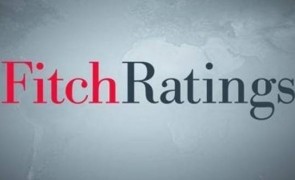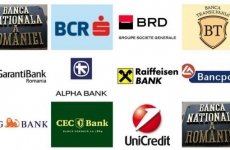Fitch Ratings has affirmed on Friday Romania's long-term foreign-currency Issuer Default Rating (IDR) at 'BBB-' with a Stable Outlook, the rating agency said in a release.
"Romania's investment-grade ratings are supported by moderate levels of government debt, and GDP per capita and human development indicators that are above 'BBB' category peers. These are balanced against twin budget and current accounts deficits, net external indebtedness that is higher than rating peers and pro-cyclical fiscal policy that poses risks to macroeconomic stability," Fitch said.
A loosening in fiscal policy since 2016 has weakened the public finances - the agency's analysts argue, estimating that outturns for the first nine months of 2018 show revenues were just 69 percent of the revised full year targets and the budget deficit was 1pp of GDP higher than the corresponding period in 2017. Nevertheless, Fitch expects the government to meet its 2018 general government budget deficit target of 2.96 pct (ESA basis) through deferring capital expenditure and ad hoc measures, as in 2017, so as to avoid the EU placing it in the Excessive Deficit Procedure. The structural deficit estimated by the European Commission widened to 3.4 pct of GDP in 2017 from 0.2 pct in 2015, Fitch notes.
The government has not yet submitted its draft 2019 budget to parliament, but it has indicated that no major tax changes are planned and has already legislated for a 10 pct public wage rise in January and a 15 pct pension hike in September. The deficit targets outlined in its letter of 18 October 2018 to the EU were 2.4 pct for 2019, 1.8 pct for 2020 and 1.5 pct for 2021, based on its view of potential real GDP growth of around 5 pct. In Fitch's view, these will not be possible to meet without new fiscal consolidation measures. Fitch analysts forecast deficits of 3.5 pct of GDP in 2019 and 2020.
The general government debt is seen at 35.0 pct of GDP at end-2018, virtually unchanged from 35.1 pct at end-2017, helped by projected nominal GDP growth of 10 pct. This compares with the current 'BBB' range median of 39 pct of GDP. Nevertheless, according to Fitch forecasts the debt ratio will start rising from 2019 as the budget deficit widens, growth slows and interest costs rise.
Risks of the Romanian economy overheating have declined as the pace of GDP growth has slowed since 2017, the National Bank of Romania (BNR) has tightened monetary policy and headline inflation has started to fall (although at 4.25 pct in October, it remains above the BNR target of 2.5 pct+/-1pp). Nevertheless, rapid wage growth in excess of productivity growth, a positive output gap, expansionary fiscal policy and a widening current account deficit mean that some risks remain, Fitch cautions.
GDP rebounded to 1.5 pct (QoQ seasonally adjusted) in Q2 2018 from 0.3 pct in Q1 2018 and 0.4 pct in Q4 2017, easing but not eliminating the risk of a 'hard landing' of the economy. The YoY growth rate dropped to 4.3 pct in Q2 2018 from a recent peak of 8.4 pct in Q3 2017. Preliminary data for Q3 2018 (released after Fitch finalised its forecasts) showed strong QoQ growth of 1.9 pct, which was surprising given the 0.2 pct contraction in industrial production and the weak trade performance.
Fitch's base case is a relatively soft landing with annual average growth forecasts of 3.5 pct in 2018, 3.2 pct in 2019 and 3.0 pct in 2020, reflecting a slowdown in EU growth, monetary tightening, a fading of the fiscal stimulus and lack of spare capacity. However, there is a risk of a more abrupt slowdown in the event of an external shock, loss of competitiveness from double-digit wage growth or marked tightening in fiscal or monetary policy, the rating agency said.
Fitch forecasts the current account deficit (CAD) to widen from 3.2 pct of GDP in 2017 to 4 pct in 2018 and 4.3 pct in 2019.
Romania's banking sector remains stable. Banks are well-capitalised, with an average capital adequacy ratio of 20.1 pct (June 2018). Liquidity is also ample, with a loan-to-deposit ratio at 86.9 pct (August 2018). Meanwhile, asset quality continues to improve, with non-performing loans declining to 5.7 pct of total loans (June 2018) from 9.6 pct at end-2016.
Referring to rating sensitivities, Fitch says that the main factors that could, individually or collectively, trigger negative rating action are persistent high fiscal deficits leading to a rapid increase in government debt/GDP and an overheating of the economy or hard landing that would undermine macroeconomic stability.
Conversely, the main factors that could, individually or collectively, lead to positive rating action are reduced risks of macroeconomic instability and improved macroeconomic policy credibility, the implementation of fiscal consolidation that improves the long-term trajectory of public debt/GDP and a sustained improvement in external finances.
 Premium
Premium




















































